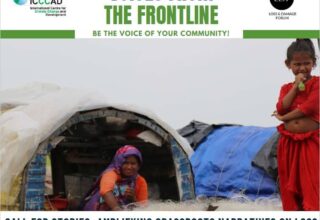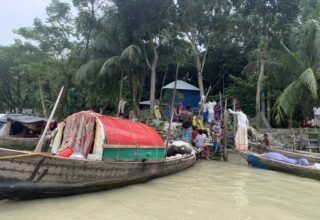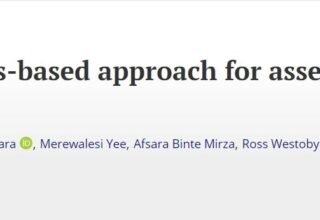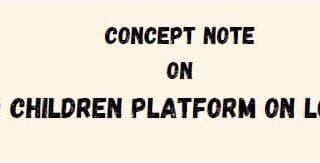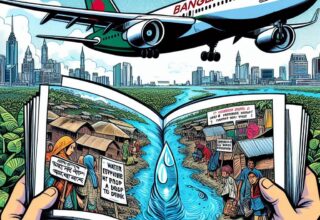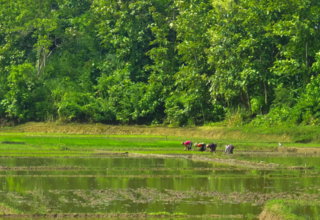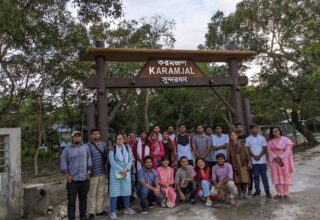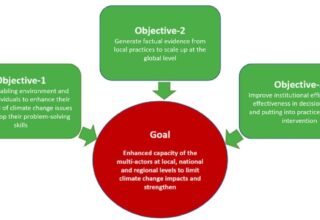Learnings from past efforts of climate and development financing
“Those who are most affected by climate change today – women, girls and marginalised communities – must be involved in the design and implementation of climate response actions to ensure the equal sharing of benefits.” – UN Women, 2022
Why are gender issues important to be considered in Loss and Damage finance?
COP27 formed a Transitional Committee (TC) to propose the design of a new Loss and Damage (L&D) Fund, aiming to support the most vulnerable countries and communities in the Global South. However, debates have arisen regarding the need to enhance its equity in comparison to previous climate and development financing approaches. In my three decades of work across Asia and the Pacific, focusing on gender and social inclusion in international development and climate adaptation, I have observed many ways in which gender-based exclusion is reinforced rather than minimised. Informed by my experience as a development practitioner and a recent review of literature and policy discourses on climate change L&D, these seven insights shed light on the challenges and opportunities in addressing issues in L&D financing. They are further enriched by the findings from the Strengthening Loss and Damage Response Capacity in the Global South (STRENGTH) project funded by IDRC (2022 to 2025).
“Debates have arisen regarding the need to enhance its equity in comparison to previous climate and development financing approaches”
Learning #1: Just including more women does not address the root cause of the issue.
While increasing the representation of women in decision-making bodies is a first step toward addressing gender issues, it alone does not automatically ensure gender justice. At times, it can create an illusion of inclusivity in development programs but still perpetuate exclusionary practices– a phenomenon known as ‘participatory exclusion’. We can learn from these experiences to foster inclusivity in L&D financing i.e., by empowering women to claim leadership and control climate financing decisions. In many regions of the Global South, women often hold de facto household leadership roles, particularly as men migrate for work. This presents an opportunity for women to take control of climate financing decisions and ensure greater gender equity by creating support structures that uplift women’s voices and agency.
Learning #2: Not all women and marginalised communities face the same challenges.
Successful gender-transformative approaches should consider the specific needs, capacities, and contexts of diverse groups, such as rural women, indigenous communities, ethnic minorities, the youth, the poor, smallholders, and people with disabilities – there is no one-size-fits-all solution. While some recognition of intersectionality exists, it often lacks practical and theoretical considerations in policy and practice. Therefore, L&D financing should move beyond binary gender thinking and actively address intersectional and structural biases that impact women and marginalized groups.
Learning #3: Gender-specific data plays a crucial role in inclusive financing.
Gender transformative financing needs to prioritize investment in gender-disaggregated data and information, which can be used to further inform L&D financing decisions in an inclusive manner. Currently, the shortage of gender-specific data is unequivocally accepted, hindering our ability to effectively address the disproportionate impacts on women and marginalized populations through climate financing. Establishing reliable data sources is crucial for identifying the distinct investment needs of these groups and allocating a good part of these investments towards developing gender-disaggregated database infrastructures.
Learning #4: Achieving gender justice goes beyond creating policies.
While numerous gender-inclusive policies and frameworks exist, they often lack mechanisms for ensuring practical implementation. These policies tend to operate in silos and are sporadically treated as mere add-ons rather than being integrated and institutionalised. Because of the lack of institutionalisation of the past learnings often, valuable lessons from previous initiatives are often disregarded in subsequent ones. Another underexplored aspect is the potential risk of channeling L&D financing through existing gender-exclusionary institutions. To yield gender-equitable outcomes, these institutions require significant restructuring and transformation.
Learning #5: Addressing gender justice should not be confined to the local level; it must be integrated across all levels of climate finance governance.
While climate and development programs often identify gender disparities locally, the link between local and global levels remains weak. Historical experiences in development finance reveal that gender inequality within governing structures, program teams, government agencies, and civil society leadership tends to perpetuate gender disparities at the local level. Even with decades after commitments such as The Convention on the Elimination of All Forms of Discrimination against Women (CEDAW) and other UN gender equality initiatives, the recent UN Women’s 2023 gender snapshot report revealed a striking gender gap in women’s participation, reaching only 26.7% of seats in parliament, 35.5% in local government, and 28.2% of management positions at work. This striking gender gap raises concerns about the lack of gender balance in the recent UN assembly in September 2023. How can the global women’s voice be adequately represented? Or was this essentially a men’s UN assembly, with a separate gathering for women planned?
The key takeaway is that gender equality must be in – grained from the outset of envisioning the L&D Fund. While the inclusion of both male and female co-chairs in TC shows promise, the proportion of female participation around 45% gives some optimism.
“While climate and development programs often identify gender disparities locally, the link between local and global levels remains weak”
Learning #6: Financing is gender biased from global to local levels – this must be acknowledged and addressed.
Although we lack data on fund distribution by gender, an example illustrates that existing financing efforts still ignore gendered needs and priorities. According to the OECD’s analysis, out of the total $331.1 billion allocated for climate actions in 2019, only 57% of Official Development Assistance (ODA) integrated gender equality, and a mere 2.4% (equivalent to $778 million) was dedicated to gender equality as the “principal” objective.
It is important to note that simply increasing financing is not sufficient. In rural families, financial matters are still typically handled by men, and ensuring gender equity in financing requires well-designed strategies to prevent increased financing from exacerbating gender inequalities.

Learning #7: Relational capacity building and empowerment should be prioritized for both men and women in – stead of solely focusing on women-centric interventions.
While development programs still adhere to the ‘women in development’ paradigm, there is now a recognised shift towards a more relational approach under ‘gender and development.’ An important lesson comes from a specific development project that trained women to be empowered at the household level. However, it inadvertently escalated conflicts within the family, with some participants facing physical violence from their husbands who were not involved in the training. Such lessons should guide activities supported by the L&D Fund to avoid such pitfalls.
These insights provide guidance for future efforts to en – sure that financing mechanisms effectively address the unique needs and vulnerabilities of women and marginalized communities in the context of climate change-induced losses and damages.
Authors: Basundhara Bhattarai is working in the Institute for Study and Development Worldwide (IFSD) as a Senior Gender and Inclusion Expert as well as a program development lead. Her research interest lies in water, forestry, agriculture, and climate change.

